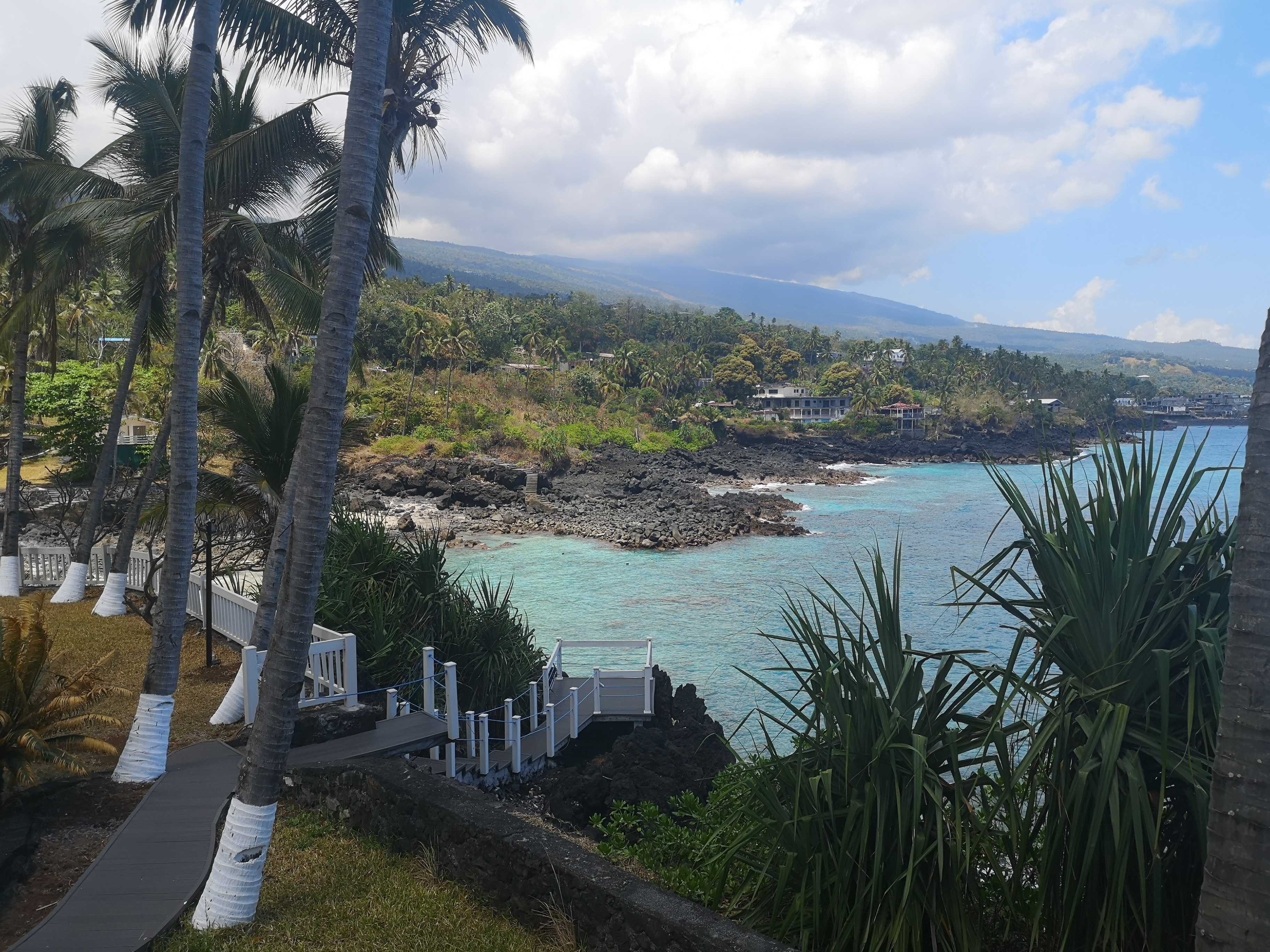
Comoros was not on my radar for 2019. Strategically, a standalone trip to the country just did not make sense. I was saving it. Comoros made the perfect “add-on” for a longer trip to Madagascar—one that I had slotted for 2021. But then, life happened, and there I was planning a long holiday weekend trip halfway around the world.
The archipelago of volcanic islands that make up Comoros are located at the northern mouth of the Mozambique Channel, between Madagascar and Mozambique. To avoid a political debate, you can Google which islands specifically make up the third-smallest African nation.
After connecting in both Dulles and Addis Ababa, and stopping in Dar es Salaam, I arrived at Prince Said Ibrahim International Airport on the island of Grande Comore on Saturday afternoon, August 31, 2019. Upon arrival, I quickly made my way to passport control. Before I could even get in line, an officer pulled me aside and took my passport. So much for getting there first! After everyone on my flight had deplaned and entered the area, the officer directed me and two others to a room beside passport control. Since I do not speak Comorian, French, or Arabic, I had no idea what was going on. Looking around, I quickly gathered that we were the only people traveling on passports that required visas for entry into the country—nationals of any country can obtain a visa on arrival. Someone in line (who I would later learn was on the Togo national football team) realized that I only speak English and walked over to help translate. Basically, the officers just wanted to know why I was traveling to Comoros. And, more importantly, why I was there alone. *Sigh*.
Right next door to Mauritius, Seychelles, and the Maldives, Comoros certainly has potential. But, tourism really is a relatively new concept for the country.

Hotel options are limited. I booked a three-night stay at the Golden Tulip Grande Comore Moroni—where most fellow travelers had opted to stay. Located just minutes from downtown Moroni, the property sure has a lot to offer.



Getting around the island can be a hassle. Local transportation is limited, and private is of course much more expensive. There is one main road that loops around the island. If you have plenty of time on your hands, you can simply walk up to the street and put your arm out. It felt like everyone that was driving a car was a “taxi driver”—almost every single car stopped each time I tried. For just some change, this is one way to get around. But, you cannot get everywhere on the island using these shared rides. Since my time in Comoros was limited, I decided it was best to hire a driver.
Apart from two half-days, I only had two full days in Comoros. While I read that was plenty, I wanted to make sure I saw and experienced as much as possible.
Day 1
Aside from scuba diving, I did not really have a plan for Comoros—I planned to wing it. I did some research and made a list of places and things I wanted to see. Shortly after arriving the other day, I met a German woman who was also traveling solo for the weekend. After a quick discussion, we decided to team up and explore the island together.
I booked two dives with Comoros Plongee for that morning.

Given the island’s location, I had high expectations. Little did I know, I was in for a surprise. After a hugely disappointing first dive, I decided to pass on the second.





Instead, I spent the rest of the day in and around Moroni with my new friend.













Day 2
After teaming up, my new friend and I hired a driver for the day to take us around Grande Comore—the largest of the islands that make up Comoros. We planned a route that covered the entire northern part of the island in one giant loop.













It sure was a long day, but it was totally worth it! I spent the following morning swimming and relaxing at the hotel’s private beach before heading back to the airport to catch my late afternoon flight to Chicago via Addis Ababa and Dublin.

Warning
Bring cash—you will need it from the moment you land. The visa on arrival costs 50 USD or 30 EUR (make sure to have the exact amount in cash, because “change” is a foreign concept around the island). Obviously, you are better off bringing euro. The franc is the official currency of Comoros, but you can pay in euro almost anywhere. At the time, the fixed rate was 1 USD to 390 KMF or 1 EUR to 490 KMF. So, if possible, bring euro. Credit cards are not widely accepted, and while there are ATMs in Moroni, they are unreliable. So, make sure you bring enough cash!





